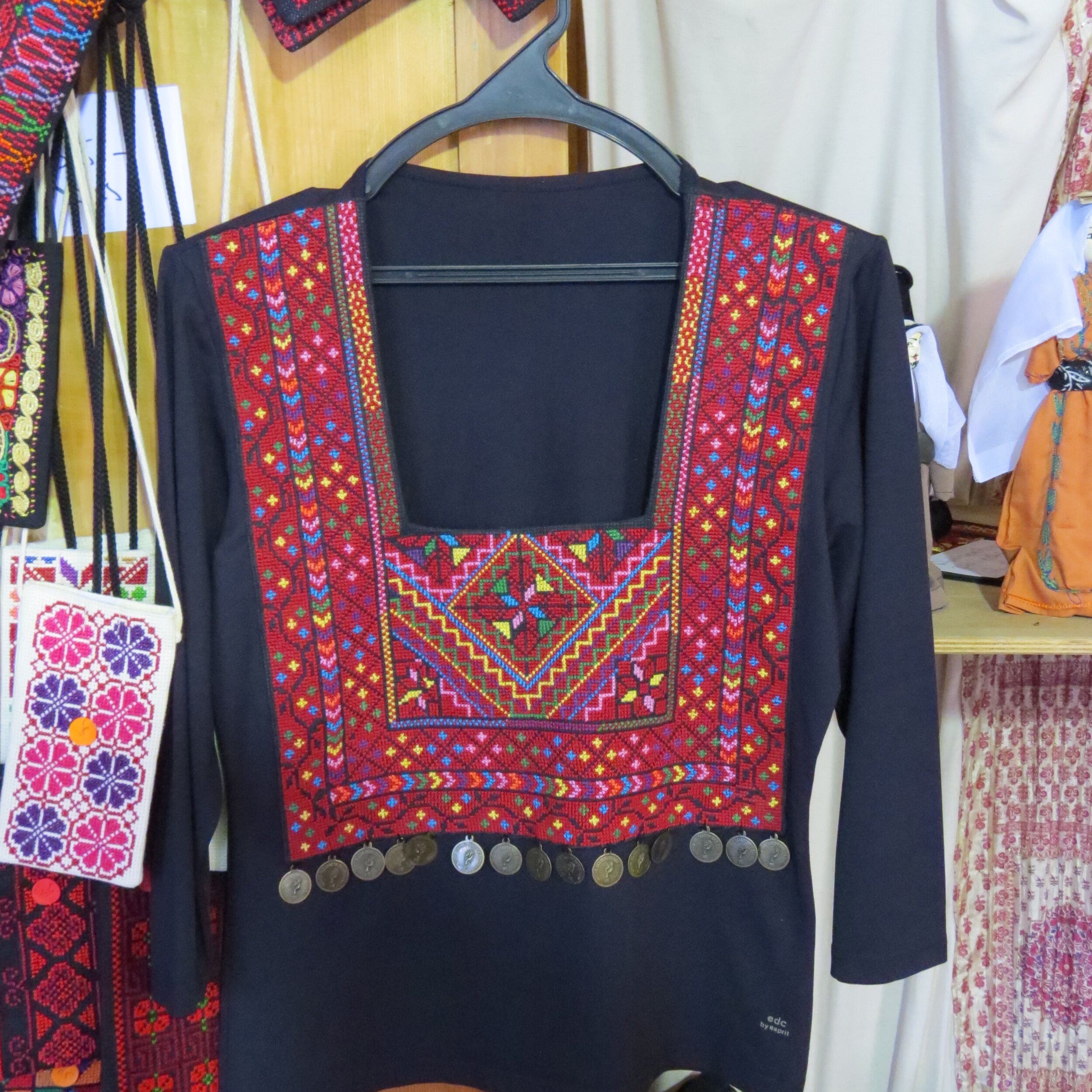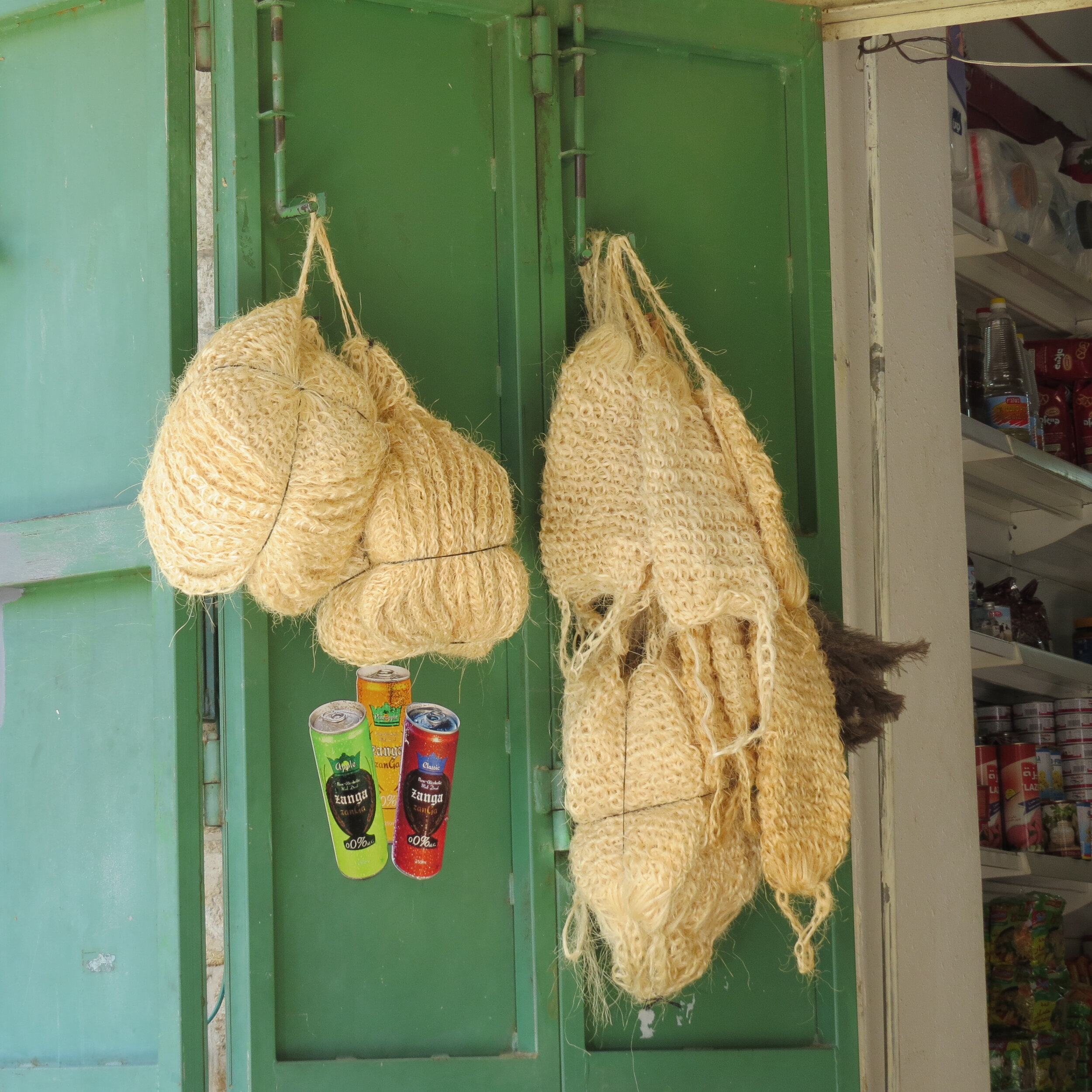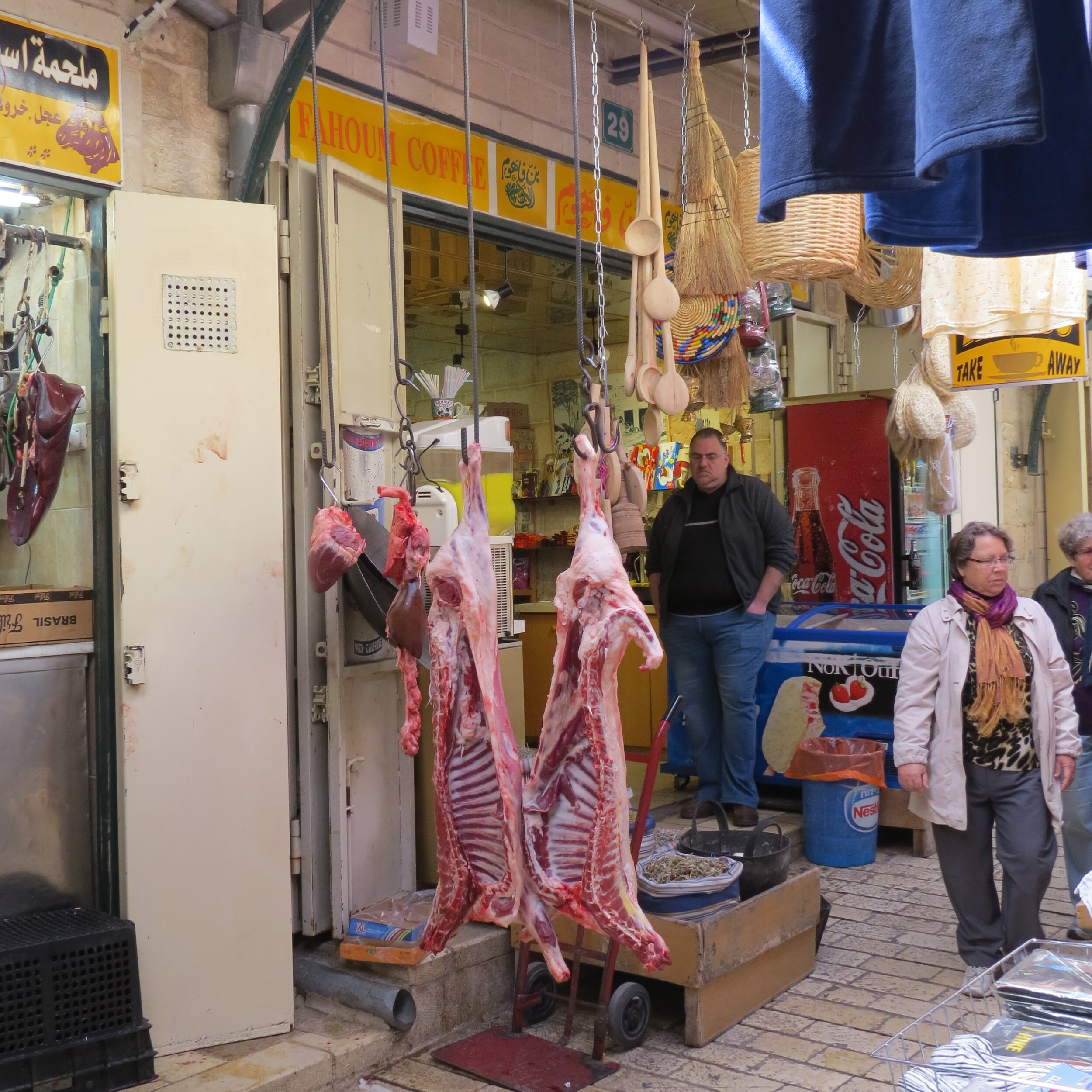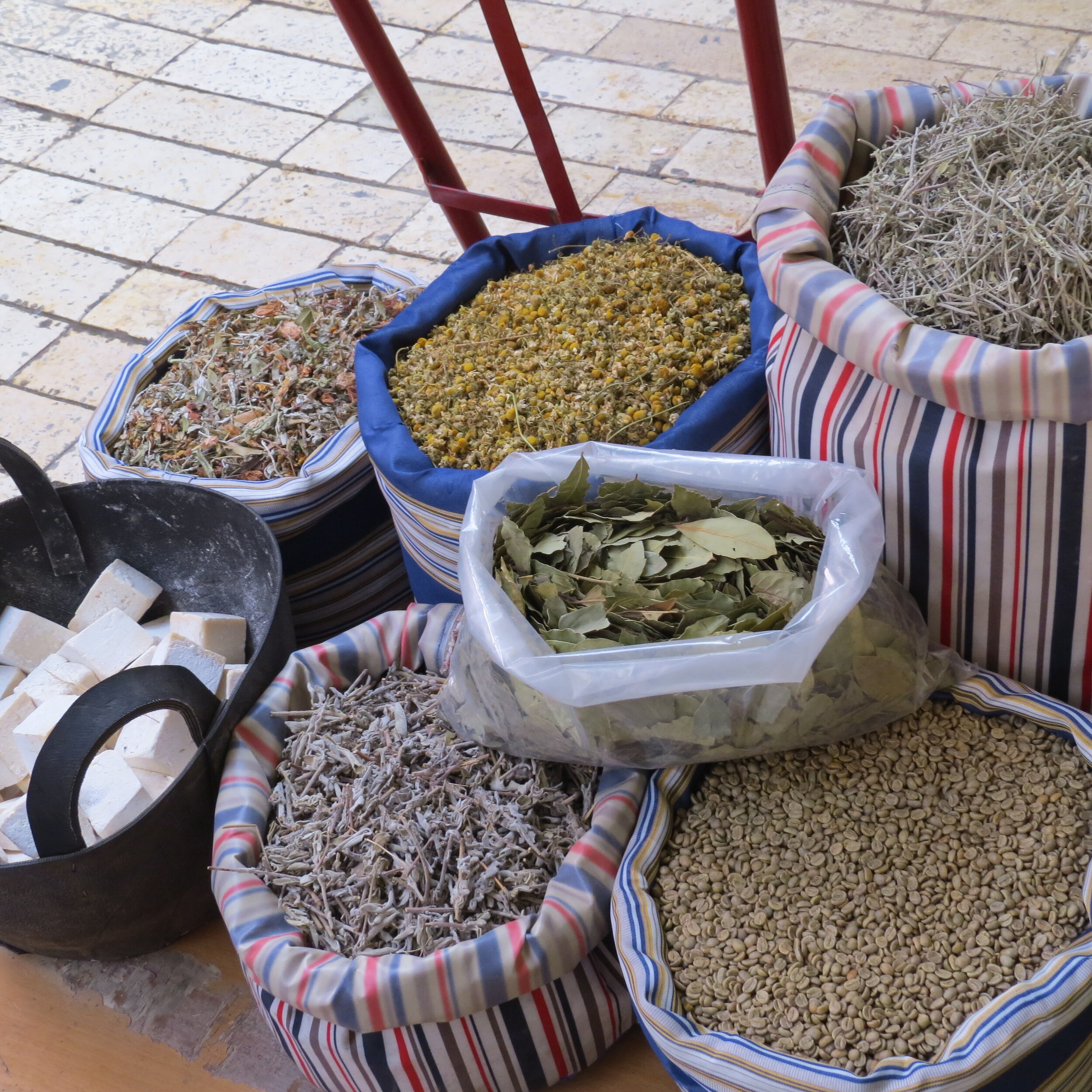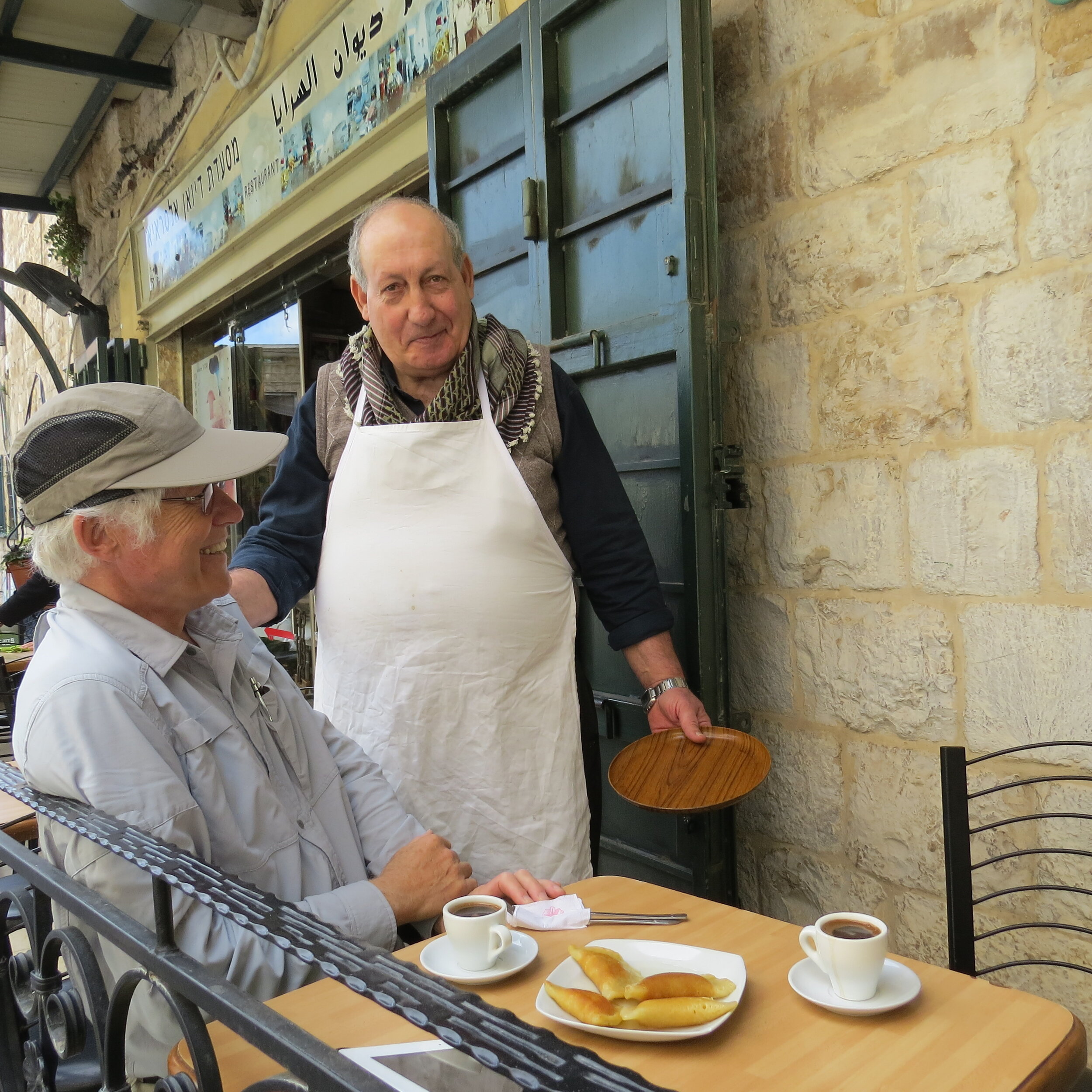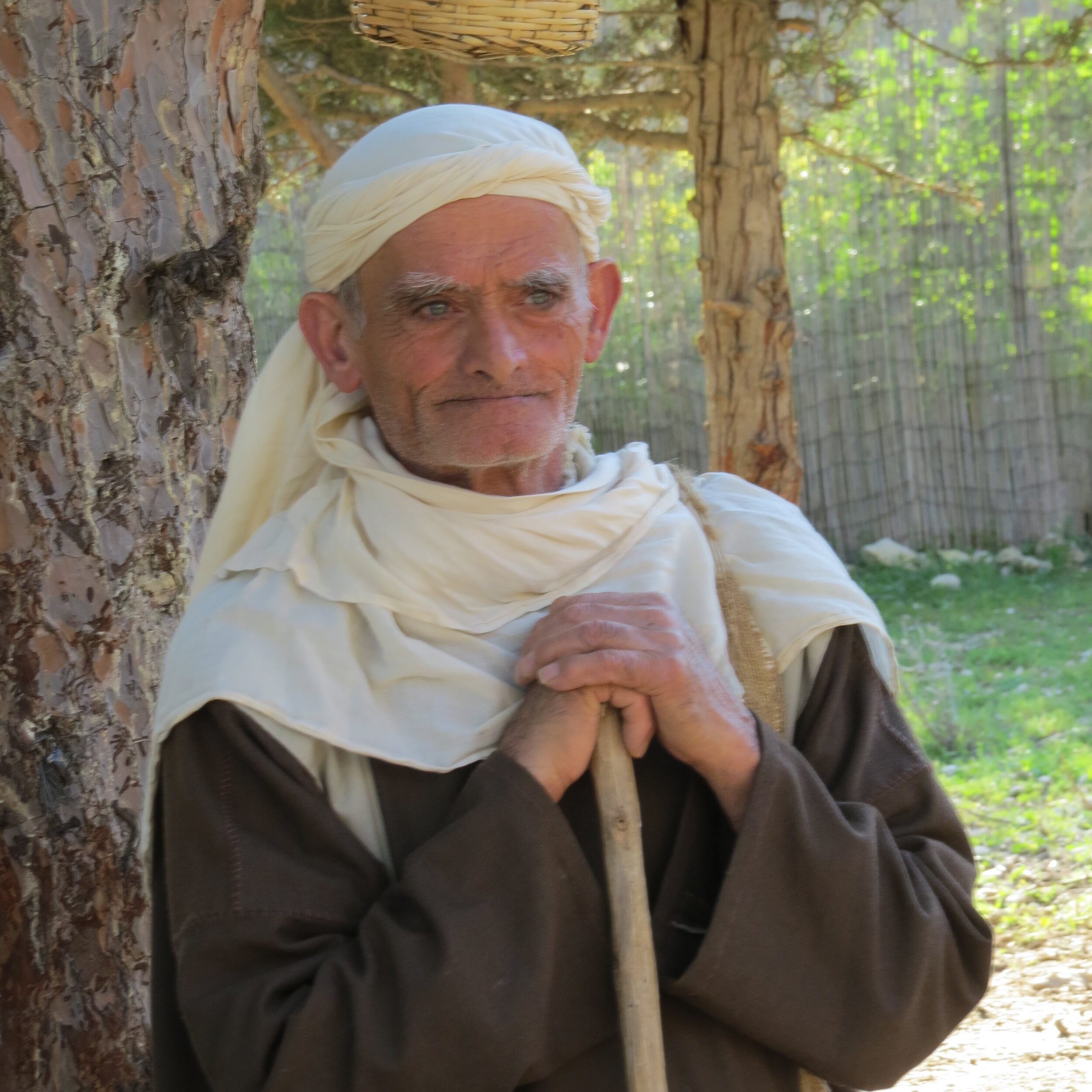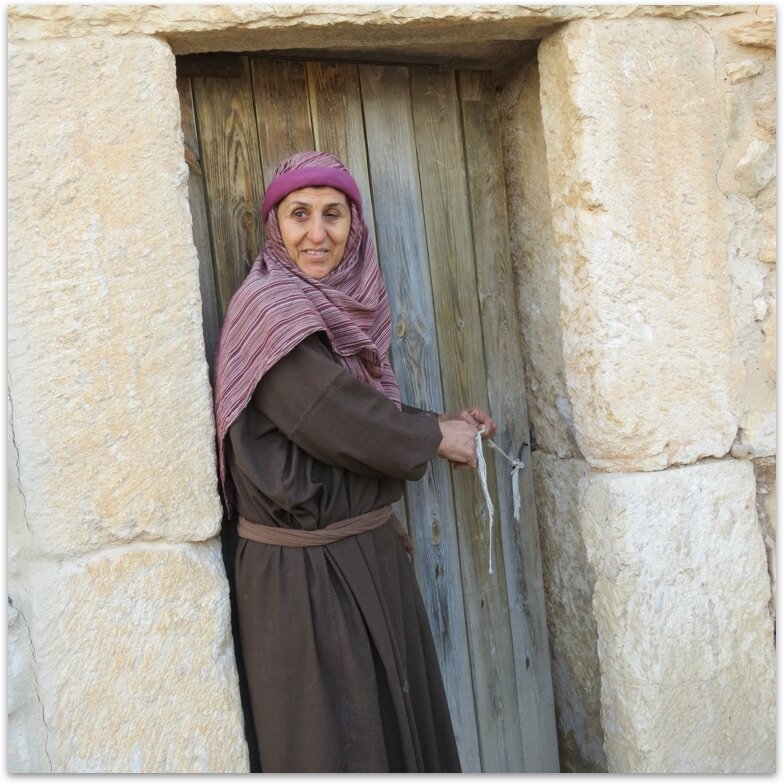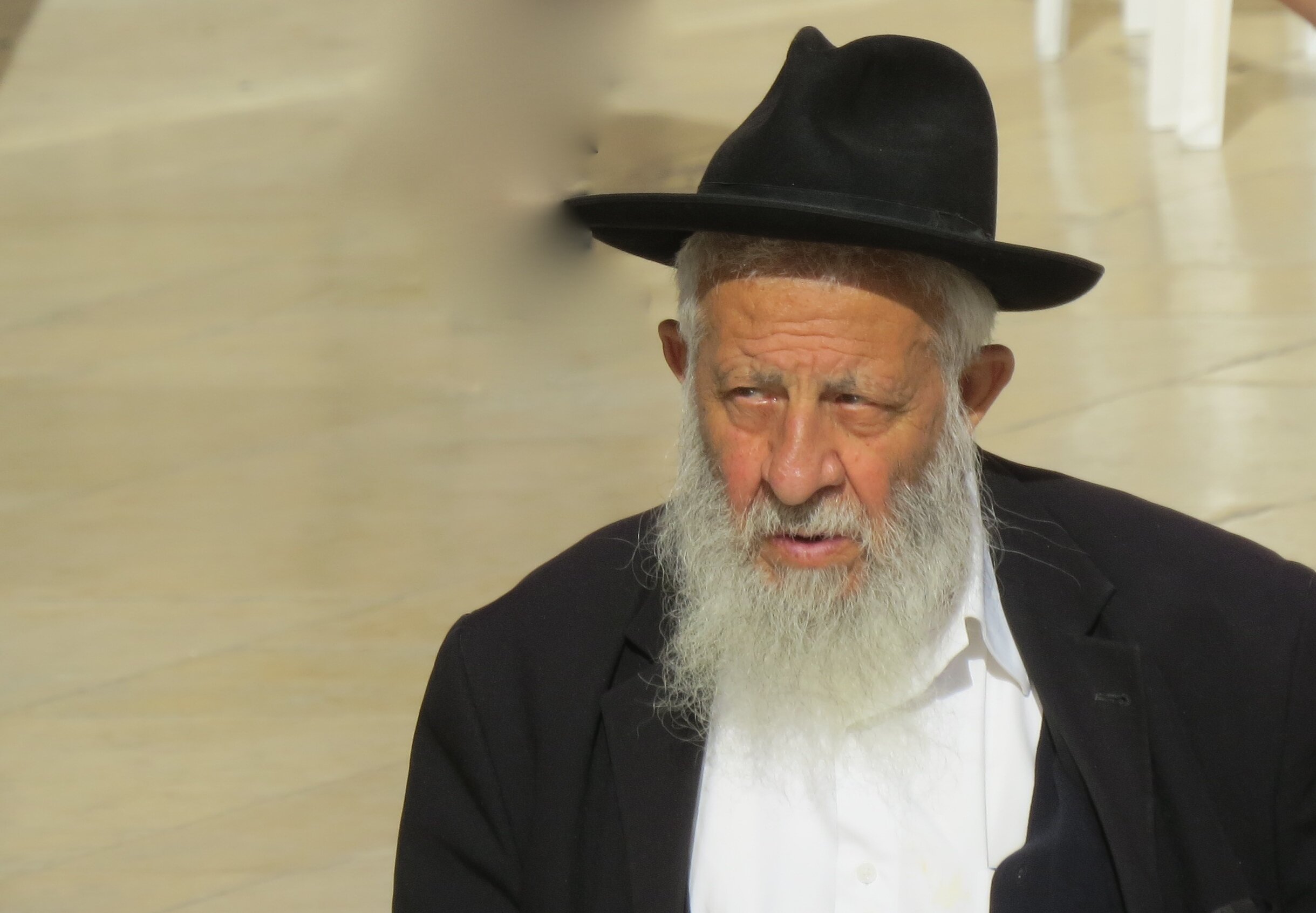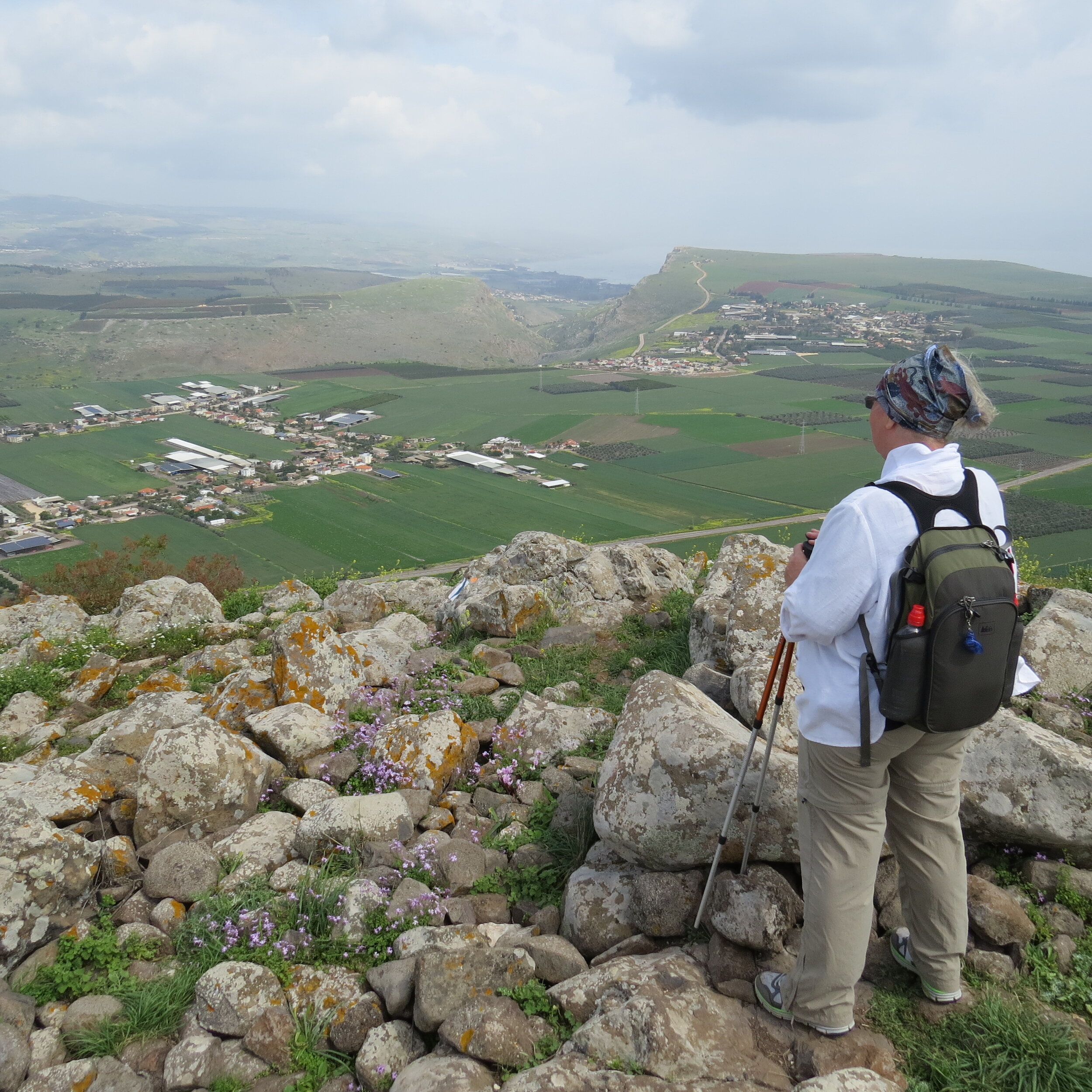The Galilee region of Israel
After a week of talks and writing workshops at a wonderful international school in Israel, we took a bus to the city of Nazareth.
Medieval alleys in Nazareth
We are happy to be staying in the old city center, which feels much more authentic than a generic hotel on the outskirts. Here, in cobblestone alleys, no busses and motorbikes race by. It is quiet because there is no traffic. The alleys, just a few meters wide, are a labyrinth into history. The paths are steep, often with steps and ruts from carts. The alleys also have gutters for run-off, making it awkward to walk. One morning we woke up and Kees said, “Did you hear those medieval wooden carts on the cobblestones?” I chuckled and said, “I think that was a Rubbermaid garbage can…” And sure enough, the garbage cans were lined up along the alley… So much for romantic notions.
When the market stalls are open, and goods spill out into the street, there is not enough room for all of the people making their way up and down the hilly town. Here, among the vegetable and fruit vendors in long shirts and skull caps, it’s easy to imagine how Jesus walked these same narrow roads.
We follow our noses to the coffee and spice vendor, buy Turkish coffee in a small stall and walk to the Church of the Annunciation where, according to Christian belief, the angel Gabriel told Mary of her immaculate conception.
The skyline of Nazareth is filled with churches, mosques and minarets. We were surprised to learn that no Jews live in this Arab city, but make their home in nearby Nazareth Ilid. We have much to learn and eagerly do so.
The skyline of Nazareth
We gorge on fantastic fried pancakes filled with cottage cheese and pecans, and drenched in honey. Buy bread and fruit for our upcoming long distance hike and do some much needed laundry.
The hotel in which we stay is a fun, ancient inn. Our room has stone arches, foot thick stone walls and feels like an old wine cellar… The courtyard is full of birds and plants, even a lemon tree - appropriate because our favourite book about Israel is The Lemon Tree (see: BOOKS, then scroll down to Israel)
Before setting off on our hike, we visit Nazareth Village, an open air museum where the time of Jesus is reenacted in village and farm settings, with period clothing and way of living. Only 500 meters from old Nazareth, they have unearthed an ancient wine press area in the rocks, as well as terraced farm land. Old, gnarled olive trees shelter the sheep and donkey that roam around while children play in period clothing and adults demonstrate herding, a guard station, weaving and more. There is even a carpenter named Joseph… Everything is very enjoyable and interesting. Except the gift shop which sells plastic baby Jesus dolls.
So what would Jesus do if he still lived here?Well, he would likely roam the hills and, as the brochure of the Jesus Trail states, “Jesus didn’t take the bus.” So we do the same – we walk the Galilee, a region of Israel, while we are here. We are not religious but we do savour this area steeped in history with so many familiar place names.
We booked the 4 day hike through Jesus Trail™, which means we still hike just with the two of us, but they arranged our overnight accommodations along the trail, the meals AND they transport our luggage. A perfect arrangement.
Leaving Nazareth, we follow orange trail markers, through the alleys of the old city, up 350 steps and out of the city. The trail then meanders through old olive groves and yellow fields of mustard seed.
Whenever we pass through a town, children and adults alike call out ‘hello’ and ‘Shalom’. These are Arab children and ‘shalom’ is a foreign word so they yell it at foreign visitors. Everyone is very welcoming and kind.
We enjoy a snack of nuts and fruit outside the gates of Zippori, a historic national park which includes Roman ruins dating back to 700 BC. We walk passed enormous towering cacti.
Then we head down into the city of Cana where Jesus reportedly performed his very first miracle: turning water into wine at a Cana wedding feast. Now, Cana proudly displays jars of clay and sells mineral water as Cana wine. There are two churches, a Catholic one and an Orthodox church right next to each other, each claiming to be the original site. Our guest house in Cana is immediately next to the churches. The very welcoming Arab Israeli hosts serve us freshly squeezed lemonade, made from the lemons in their own backyard, before showing us a room where we have a much needed shower.
It is interesting to note that Arabs and Jews still live in separate areas of town, if they even share a town. Cana has a Christian side and a Muslim side. Some towns only have one or the other. Apparently they get on well enough on the surface, but many nuances play a role in the deeper understanding of how both cultures mix or don’t mix.
Our hosts not only provide accommodations, they also serve us a traditional dinner at the family table. It’s a wonderful opportunity to chat and ask many questions.
We leave the Cana Wedding Guest House, after a great breakfast of tomatoes, cucumbers, pita bread, hummus, yogurt and omelet and Turkish coffee. We also stock up on fresh dates. I have never seen or tasted such incredible dates. Oy Vey! Soft, sweet, huge. Best date I ever had…
Hiking out of Cana we chuckle at the shoe store. Would have never known this was a shoe store… But yesterday my boots were killing me and the son of the guesthouse owner took us to this store. It was closed and no shoes in sight through the window. But a lady across the road came running with a key and sold me a pair of running shoes, the only pair that fit.
This is why I am now hiking the hills of the Galilee in fluorescent green shoes….
One day the only shade we find is in a viaduct…
We are on day two of the four day Jesus Trail. Yesterday we hiked 15 KM, same today. The weather was overcast but no rain. And it’s perfect to do this hike without sun beating down on us. You can only do the hike in spring and fall, because the summer’s heat is too much. Even now it’s very warm.
On the outskirts of Cana we are appalled by the garbage strewn left and right. People seem to dump everything they don’t need anymore on the outskirts of town, in the hills. There are empty bottles and plastic bags but also broken office chairs, TV’s… The Jesus Trail company is working hard to change this by lobbying the government to take measures, as well as through volunteers cleaning up. We found that the beaches in Israel were very clean. But if the government wants to promote tourism through hiking trails, people will have to learn to clean up their act.
The trail today leads through rocky, green hills and along wheat fields. At one point it turns into a narrow cattle trail, leading over hills. Our view is on the Golan Heights to the east.
We walk through a lovely forest of olive, laurel and pine trees and have a picnic lunch at the base of a sign, in Hebrew, that had two words in English: Frican Forest. There is no place to sit so we share the wooden base of the sign to perch on while we eat pita bread with cheese, freshly roasted pecans and our amazing dates. As soon as we walk into the Frican Forest, we spot Frican picnic tables! And not just one or two but many! The Hebrew sign had probably been trying to tell us that there were picnic tables coming up.
Roman ruins are being excavated.
As we approached our destination, the Kibbutz Lavi, we could see the buildings on the top of a hill but no road or path leading to it. We got lost trying to follow the trail and looking for the right path. We probably walked some 2 KMs wrong but eventually took a road straight up the hill, arriving huffing and puffing at the hotel.
Tonight’s hotel is beautiful and has a huge indoor pool. Dinner was kibbutz style in a huge dining room: fish, chicken, roast vegetables and much more. It is interesting to note that this is a traditional, orthodox kibbutz and all food is prepared according to strict rules under supervision of a rabbi. It was very tasty.
On Day 3 of the Jesus Trail we hike from Kibbutz Lavi to Moshav Arbel. The sun breaks through the clouds and the sky gets blue. The weather, this week, is perfect for hiking. It is the first time here that we hike among cows and even the odd steer. They are huge, but just curious and they don’t bother us.
We do follow the cattle’s narrow trails through fields, among boulders and up and down hills. I can totally picture a young Jesus and his disciples walking these same hills, philosophizing about politics and life.
It was the first day we had to climb up and up and up, rounding some high, rocky outcrops called The Horns of Hattim. Amazing to realize, as we walk these green, deceivingly peaceful, fields dotted with wildflowers, that this is the very spot where, in 1187, the army of Saladin defeated the Crusaders.
It was the first time I ever visited a Druze site. The Druze are an Arabic group of people living in Israel, who are recognized as a separate religious culture. The Druze have ties to the Prophet Jethro and to Moses.
We visited their temple Nebi Shu’eib.
The men wear white turbans or a fez, while the women wear white headscarves. The temple dates back to the year 300, parts were constructed in 1187. Pretty darn old.
Check out this link if you want to learn more about Druze history: https://www.jewishvirtuallibrary.org/jsource/Society_&_Culture/druze.html
Wedding Wine in Cana
Because I have developed a blister, we decide to take a short cut to the village Moshave Arbel, rather than hike the extra 10 KM through the hills. All day we had a view of our ultimate goal: the Sea of Galilee. As we enter the village in which we are staying tonight, I notice it is very clean, with wide streets, sidewalks and lots of greenery. Turns out this is a Jewish village, as opposed to the many Arab towns in which we have stayed. I didn’t know this but we learned that Arab Israelis don’t pay local taxes and thus their villages don’t have services like garbage pickup or communal parks.
The word I have perhaps heard most of, here in Israel, is “welcome”. Everyone is incredibly welcoming. The hosts at Arbel Guesthouse welcome us with a jug of lemonade. We have the top floor of the house, with a jacuzzi, bed and small kitchen. A simple hole in the wall serves as bathroom ventilation.
And, first time ever, we are not only given the key to the house but also the key to the gate to the entire village. When we walked past, I wondered why there was a huge gate that could close off entrance to the town. Things like war or invasion of tanks crossed my mind. Never did the real reason occur to me. Our host explained that nearby farmers will come and steal sheep. That’s why we now have a key to the village. We and the sheep will be safe tonight.
We enjoyed the best possible dinner here. In such a small village near the shores of the Sea of Galilee we ‘discovered’ that the owner of our guesthouse, Arbel Guesthouse, is an amazing chef. Yishmael served us fresh mousse of mango, followed by delicious soup. Then the best roast chicken we’ve ever had, salad with cranberries and nut and FIVE different vegetables, mashed potatoes topped with sweet potatoes – all beautifully served. Then we had homemade strawberry and lemon sherbet, followed by homemade limoncello. A fabulous meal worthy of any 5 star restaurant. Moshev Arbel should be on the map just for this!
Gorgeous blue sky greets us on the last day of our hike. Arbel Guesthouse outdid itself with breakfast too: fresh grapefruits and avocados from their own garden, olives, cucumber, tomatoes. Fresh yogurt. Homemade tea. Bread, granola and baked eggs. This was by far the best gourmet place we stayed at in Israel. I wanted to stay here.
But the trail calls so we hoist our day packs onto our backs (our larger packs are being transported, what a luxury) and set off. The trail meanders down a green valley of wildflowers, past the ancient ruin of a synagogue. We descend along narrow cow trails into a steep valley, rock cliffs rising on both sides. We meet several herds of cows with new calves.
At the bottom of the valley we skirt the Bedouin village of Wadi Haman, walking through orchard after orchard of grapefruits, olives, oranges and bananas.
And then we see it up close: the Sea of Galilee. I touch the water and marvel at the idea that we are now at 200 meters below sea level. The Sea of Galilee is Israel’s largest lake. Directly across from the sleepy villages is the Golan Heights, and then Syria. The only military presence we have seen, so far, is the odd soldier, a helicopter now and then, and two huge tanks in the middle of a forest. When we got closer we realized that they were completely inflatable. Decoy tanks? I guess they are blow-up tanks, pardon the pun.
Hot but happy…
It is interesting to note that all Israeli Jewish men and women (except the ultra orthodox) serve in the army as well as the Druze. The Arab Israelis are exempt from military service.
As we walk along the sea of Galilee to our final destination, we see the Church where fish and bread were multiplied, according to the gospel. We see the place Mary came from, Mount Beatitudes where the sermon on the mount was delivered, and finally end our hike in Capernaum (interestingly pronounced Kafh Na Ghoom) - the village where Jesus reportedly lived and picked the disciples. Ancient ruins are being preserved and busloads of Christians from around the world visit the site. One memorable group arrives at the same time we do: a large contingent from Ghana. Dressed in traditional, colourful clothing and headgear, they link arms and sing hymns as they approach the place where Jesus dwelled. A touching moment in a special place.
65 KM later my toes are sore but we did it.
If you are interested in hiking and in visiting historic Israel, we highly recommend this experience.
You can hike the entire trail on your own by following the orange symbols. It is a good idea to buy the book and map of the Jesus Trail. We were glad that we booked through the organization that has developed the trail: http://jesustrail.com
This was advertised as a 6 day hike but in reality it is only 4 days in which you walk 65 KM. Day 1 is the day you arrive, on your own, in Nazareth and stay at the Fauzi Azar Inn. Day 2 is meant for exploring Nazareth. The Inn offers a free tour. That was the only part we did not like. We are just not good tour people, but 45 minutes into the ‘tour’ we were still standing in the same spot and had only heard about the guide talk about herself and about the Inn’s owner. It felt a bit like one of those time share talks. We actually left the group and explored on our own, having a wonderful time.
The organized hike is not cheap but when I prized out different hotels along the route to look at making all of our own bookings, it seemed to be about the same price. The organized hike includes all breakfasts and all dinners while on the trail. And, best of all, it includes having your luggage moved for you. This worked like a charm. Our luggage was always waiting for us. On the last day, the taxi driver who had our luggage, picked us up at the end and brought us to a hotel we had booked in the city of Tiberias.
On our very first day, a volunteer (in our case a lovely American girl) accompanied us to make sure we had no problems on the trail, with the map, etc. This made us feel comfortable and welcome, and helped them make sure that we could find the trail on our own. The itinerary and all details are well described on their website. The entire experiences of hiking through beautiful countryside, having luggage transported, staying in great accommodations, meeting both Jewish and Arab families and learning so much about the biblical and the political history of the country, made this one of my favourite hikes anywhere. All in all booking through The Jesus Trail TM was great and well worth it: https://jesustrail.com/
We found a great restaurant in Nazareth where we’ve gone back twice for dinner: Tishreen Restaurant: https://tishreen.rest.co.il/
This is where we stayed in Nazareth: http://fauziazarinn.com
Our fabulous guesthouse Moshev Arbel: http://www.en.4shavit.com
Click HERE for our favourite books about Israel, then scroll down to Israel.



